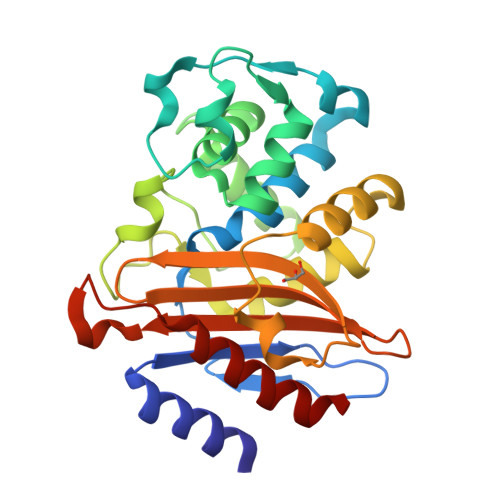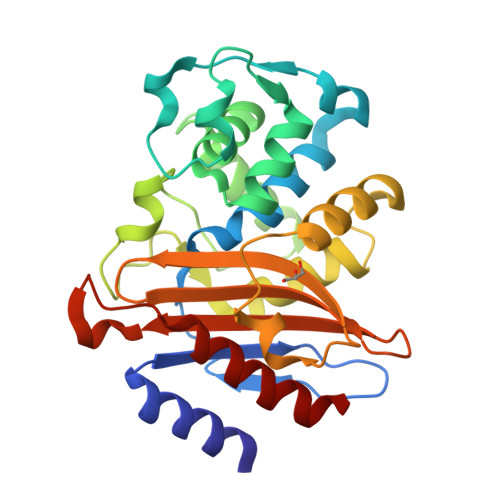A low-barrier proton shared between two aspartates acts as a conformational switch that changes the substrate specificity of the beta-lactamase BlaC.
Sun, J., Boyle, A.L., Brunle, S., Ubbink, M.(2024) Int J Biol Macromol 278: 134665-134665
- PubMed: 39134195
- DOI: https://doi.org/10.1016/j.ijbiomac.2024.134665
- Primary Citation of Related Structures:
8RFZ, 8RG2, 8RII - PubMed Abstract:
Serine β-lactamases inactivate β-lactam antibiotics in a two-step mechanism comprising acylation and deacylation. For the deacylation step, a water molecule is activated by a conserved glutamate residue to release the adduct from the enzyme. The third-generation cephalosporin ceftazidime is a poor substrate for the class A β-lactamase BlaC from Mycobacterium tuberculosis but it can be hydrolyzed faster when the active site pocket is enlarged, as was reported for mutant BlaC P167S. The conformational change in the Ω-loop of the P167S mutant displaces the conserved glutamate (Glu166), suggesting it is not required for deacylation of the ceftazidime adduct. Here, we report the characterization of wild type BlaC and BlaC E166A at various pH values. The presence of Glu166 strongly enhances activity against nitrocefin but not ceftazidime, indicating it is indeed not required for deacylation of the adduct of the latter substrate. At high pH wild type BlaC was found to exist in two states, one of which converts ceftazidime much faster, resembling the open state previously reported for the BlaC mutant P167S. The pH-dependent switch between the closed and open states is caused by the loss at high pH of a low-barrier hydrogen bond, a proton shared between Asp172 and Asp179. These results illustrate how readily shifts in substrate specificity can occur as a consequence of subtle changes in protein structure.
Organizational Affiliation:
Macromolecular Biochemistry, Leiden Institute of Chemistry, Leiden University, Einsteinweg 55, 2333 CC Leiden, the Netherlands.



















